Foreword
Access to data and the ability to use it are key enablers for innovation and growth in our increasingly data-driven economy. We need new digital solutions to accelerate the green transition. One example is the Digital Product Passport (DPP), which is being developed rapidly in Europe. DPPs will boost sustainable business and the circular economy through the better use and sharing of data in the production chain and throughout the lifecycle of products.
When product data for different products and services can be circulated through the manufacturing and distribution chain using DPPs, the benefits are apparent. Business productivity, resource efficiency and product traceability are improved. The data can also facilitate product maintenance, repair and refurbishment, thereby extending product life cycles. Data is also needed at the end of a product’s life cycle to support the safe recovery and reuse of materials. Providing product information to customers and supply chain actors enables them to make sustainable consumption and partner choices.
Ideally, DPPs could help consumers make more sustainable choices. For public authorities, they offer more efficient means to control and transfer data. For businesses, they provide an incentive to develop sustainable and circular business models. DPPs open up new business opportunities for Finnish and European companies and can create a significant competitive advantage. In the future, increasing regulation, price competition and consumer demands will further increase the demand for sustainably produced products. At their best, digital product passports are a means to repatriate manufacturing to Europe and strengthen European autonomy.
To meet the expectations placed on Digital Product Passports, it is important to develop them through experimentation. This will also allow the legislation to take into account, for example, the maturity of companies to maintain data, transfer product information along value chains, and adopt common data models.
At Sitra, we have supported the piloting of the DPP to develop the concept further and explore the new circular economy business models it offers. Pilots have been carried out in the battery, textile and logistics value chains. The sectors differ significantly, but common lessons can be drawn from the product passport pilots. During the pilots, we have also identified a widespread need for peer learning. This is why we have funded the FINNPASS network for Finnish companies and DPP developers.
Many thanks to the authors of this working paper, Henna Suomi and Pirkka Frosti, and to Sitra’s writing team for bringing together the lessons learned from the product passport pilots. I would also like to thank all those involved in piloting the DPP pilots presented in this paper. The DPP is a good example of a new way of working that requires extensive collaboration.
I hope the lessons learnt from the pilots summarised in this paper will also be useful to others involved in the development of the DPP.
15 April 2024
Laura Halenius
Project Director, Sitra
Summary
The EU is working to accelerate the transition to a circular economy through a range of measures, including the use of Digital Product Passports (DPPs). A DPP can be considered a digital version of a physical object. It provides accurate and reliable information about a product throughout its manufacturing and distribution history, for example about its raw materials, composition and safety. In the future, almost all products entering the EU market will need to have a DPP. The regulation of DPPs is incremental and the field is constantly evolving. In Finland, a group of companies from different sectors and an industry association have been exploring the challenges and opportunities of DPPs in four pilot projects. Sitra has funded the pilots on machine batteries, textiles and logistics.
This working paper summarises lessons learnt from these pilot projects and makes recommendations on how digital product passports can help to address regulation, develop new circular economy business models, and boost the competitiveness of European businesses. While the observations and conclusions of the paper are based on current knowledge and the results of the pilot projects, it should be borne in mind that the development of the DPP is constantly evolving.
The findings of the pilots relate to business development, the use of data and the application of technological solutions. The pilots show that DPPs offer opportunities for new circular business models. The pilots showed that consumers, client companies and investors have very different needs for DPPs and that their different perspectives should be taken into account in the regulatory work on DPPs. It was also found that businesses face challenges in understanding all the upcoming regulations related to DPPs; for example, support from industry associations is needed to understand them.
The pilots found that the introduction of DPPs requires new services to facilitate data sharing, such as data intermediary services. Access to data also requires new solutions to enable different actors to access and use it in the value chain. Data productisation was identified in the pilots as a possible basis for information architecture and standardisation of DPPs. Another notable finding was that the public free testbed served as an important basis for data transfer and collaboration between organisations.
Using the lessons gained from the pilots, the working paper provides the European Union with seven recommendations for action to support the development of a new regulatory framework for the DPP.
- The European Commission and the member states should support European industry in preparing for DPPs. The implementation of the DPP regulation must consider the level of maturity of the different industries and companies in terms of data exploitation and the complexity of their value chains. Not all companies and industries are yet able to use data strategically and effectively, and this needs to be taken into account in the development of the regulation.
- The public sector must lead by example to accelerate the adoption of DPPs. For example, the use of DPPs should be included in the criteria for public procurement.
- Investment is needed in product development, pilot projects and industry peer networks related to DPPs. Investment is needed at both EU and national levels. The EU also needs open testing platforms and pilot environments to enable companies to test different solutions for sharing DPP data along the value chain and to demonstrate the business potential of the data-driven circular economy.
- Standardisation should ensure the smooth and cost-effective interoperability of the European DPP system. The system should be based on widely used internet protocols, and industry-specific data standards should also be taken into account.
- The use of different product identifiers should be supported so that DPPs can respond to industry and user-specific needs and rapid technological developments. The implementation of DPPs requires the definition of online and offline data. Implementation should focus on presenting a standardised minimum set of information through different data carriers.
- European data spaces need to be strengthened as a data-sharing infrastructure to ensure interoperability of DPPs in cross-sector value chains. The interoperability and technology neutrality of the systems must be ensured to enable the use of DPPs for different data exchange and user needs.
- A governance model for DPPs should be promoted to clarify the ground rules for stakeholders. The governance model sets the ground rules for the development of the DPP concept and defines how decisions on DPPs will be made by the industry.
1. Digital product passports enable twin transition in Europe
The European Union has ambitions to lead the international sustainable development agenda. One of these is the EU’s proposal for a Digital Product Passport (DPP) as a tool for collecting and sharing product information to improve traceability and transparency.
Solving the environmental sustainability crisis requires a comprehensive understanding of the interdependencies between climate change, loss of biodiversity and the depletion of natural resources, as well as developing digital solutions to tackle them. Policy instruments that support the green and digital transition, known as the twin transition, provide a regulatory and solution framework that guides all actors in value chains from material sourcing to manufacturing and brand owners to after-market operators, either directly or indirectly.
The European Green Deal is the EU’s growth strategy, which aims to make Europe a resource-efficient, competitive, and climate-neutral economy by 2050, taking into account the sustainability of natural resources and social justice. A key part of the European Green Deal is the implementation of the new Circular Economy Action Plan (CEAP), which facilitates the transition to a circular economy. The circular economy offers solutions for meeting climate goals and halting biodiversity loss and strengthens the foundation of the EU’s industrial renewal objectives, such as job creation in the climate-neutral sectors of the circular economy.
To achieve the European Green Deal and a fair green and digital transition across Europe, better access to open and private data is crucial. Sustainable business and the circular economy will be boosted by the better use and sharing of data, in particular to improve productivity, resource efficiency and the traceability of products. Therefore, the European Data Act and other regulations implementing the European data strategy and accelerating the data economy are key components for implementing the twin transition.
There is no circular economy without data economy.
Marja-Liisa Niinikoski, Managing Director, Finnish Textile & Fashion
The EU’s circular economy action plan consists of numerous legislative initiatives aimed at reducing the environmental impact of materials and products manufactured in or imported into the EU. If the product does not meet the new requirements set for it, it cannot be placed on the market or used in the EU area. In this way, physical goods on the EU market will be made more environmentally friendly, more circular and more energy efficient throughout their entire life cycle from the design phase to daily use, repurposing and end-of-life.
The EU’s new battery regulation and the proposal for a new Ecodesign for Sustainable Products Regulation (ESPR) are the first to implement product policy in line with the European Green Deal’s circular economy objectives and to set requirements for a Digital Product Passport (DPP). The regulations, which will apply to around 30 product types, will be implemented phased in by 2030. Once in place, the ESPR will promote, among other things, the use of durable materials, repairability, maintainability and recyclability within the EU single market.
Although the regulation will include specific circular economy criteria by product group, the common denominator across all categories will be the reduction of environmental impact. This is linked to production and consumption and the creation of new business opportunities for product-as-a-service. Better use of data through the product lifecycle plays a crucial role in facilitating the transition to a circular economy.
The purpose of this working paper is to activate discussion on what the implementation of Digital Product Passports would mean. Currently, the DPP concept is still under development. The EU’s goal of becoming a global leader in sustainable production and carbon neutrality by 2050 has far-reaching implications for all European companies, regardless of industry, as well as for non-EU companies operating within the Union.
What all industries have in common is that the twin transition requires comprehensive data sharing across global value chains. The DPP requires stakeholders in the value chain to share their regulatory information about the product, as well as the environmental impact of production, use and end-of-life recycling. If stakeholders work together to provide information for DPPs, they could benefit from new circular economy business model opportunities. To achieve this, the digitalisation and standardisation of product-related information through DPPs is considered essential. Sectors are at different stages of readiness to embrace the concept, and specific solutions for companies are still in the identification and initial planning process.
This working paper presents insights from four Finnish pilot projects and makes recommendations on how to accelerate the development and implementation of digital product passports. DPP can become a strategic and business priority for companies, enabling the seamless exchange of product information among stakeholders. It could also support the principles of product circularity, facilitate informed decision-making and streamline compliance verification. The recommendations in this working paper highlight the factors that support and enable companies to adopt the DPP in different industries. Additionally, it outlines best practices on how to generate value for the different participants of the value chain by using existing data sources and information systems.
2. Finnish DPP pilots in different sectors
The introduction of new concepts and regulations requires testing. In Finland, the current DPP concept has been piloted in the textile, work machinery and logistics industries in different parts of the supply and value chains. All pilots are linked by a business-driven and cross-sectoral approach.
2.1 The Finnish approach to implementing the DPP
The potential of digitalisation to solve major societal challenges has long been discussed. Currently, technological development is at a stage where the expectations placed on technology can be met. The increased availability of data, cloud computing, and new network technologies, combined with artificial intelligence tools, enable the development of innovations that have a real chance of addressing the challenges in the path of the green transition. Finland aims to be at the forefront of developing these data-driven innovations.
An important aspect of the development of the Finnish data economy has been the close integration between companies and the public sector. This focus is now even more important, as the green transition and the DPP regulation require global value chains to be brought closer together.
The Finnish data economy’s architectural approach is built on this premise and is seen as intrinsically valuable for the DPP development. Rapid changes in the solutions and technologies that companies use today should be avoided, and the architectural strategy should follow the good practices, standards and solutions that companies already predominantly use and support. Many of the elements and technologies required for implementing the DPP are already available, and it is just a matter of using them wisely. When introducing new features and developments, it is crucial to prioritise their marketability.
All four Finnish pilots examined in this working paper took this approach from the outset, identifying the key stakeholders in the value chains and considering what needs, requirements, and premises they have today. The pilots also explored how the DPP could assist them not only in implementing it as a green transition compliance tool but also to work out the business aspects and constraints of that limit its uptake today.
The Finnish DPP solution architecture is based on the principles of the European data space and builds interoperability and digital trust around three key components: data products, consented data sharing and the flexible linking of physical and digital identities based on business and industry needs. This approach extends the concept of the DPP from having just one application to enabling all existing business and operational systems today (applications and data sources) to be part of the DPP system and to start implementing it gradually.
The four Finnish DPP pilots tested this architectural approach, each from its own specific perspective. The pilots on battery data for work machinery and on the sharing of logistics emissions data tested end-to-end value chain data delivery with productised data sharing in a data space. The textile pilot investigated the supply of the productised data in the value chain with a minimum viable data source for the supply of DPP data. The second textile industry pilot explored the supply chain data delivery with distributed ledger infrastructure for traceability of the data delivery for the product identities.
Figure 1. The Finnish approach to implementing the Digital Product Passport
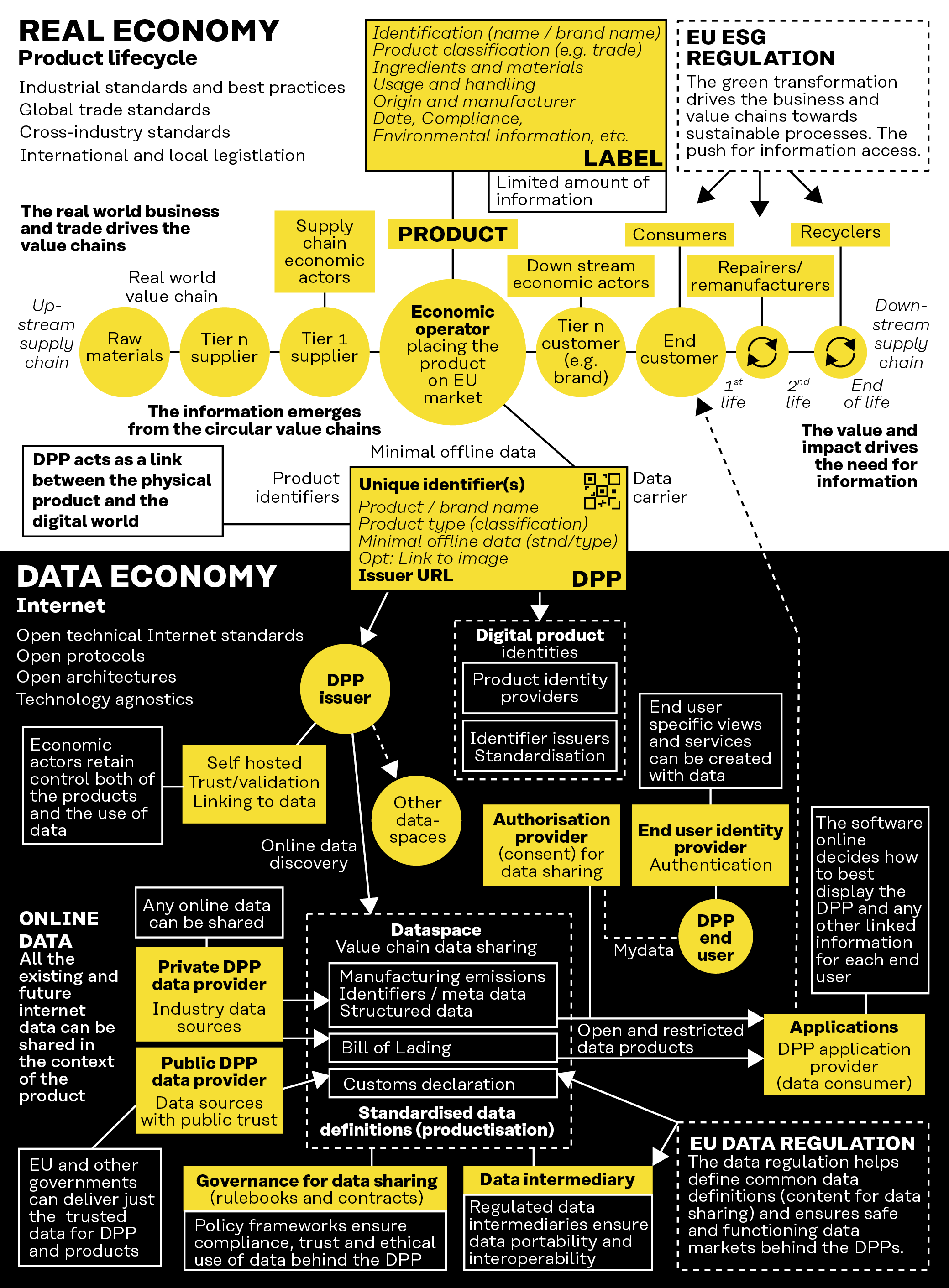
2.2 Battery data sharing in the work machine industry
Sustainable Industry X SIX is an industry-led initiative that brings together a variety of actors, including machine builders and technology and research partners from Finland and internationally. Led by machinery manufacturers Sandvik and Kalmar, SIX’s Mobile Work Machines subgroup decided to conduct a DPP pilot.
The main goal of the pilot was to evaluate the implementation of the DPP for electric mobile work machines and their batteries in a real-world setting, specifically in mining and port environments. The pilot also aimed to identify methods for accessing data from machinery related to sustainability, particularly Scope 3 emissions data. Scope 3 data refers to the indirect emissions generated in a company’s value chain, including both upstream and downstream activities, such as the production of purchased materials, the transportation of purchased goods and the use of sold products and services.
The key achievement of the pilot was that it demonstrated the potential to create interconnected value among stakeholders in the use of individual batteries and machines. Specifically, DPPs facilitated the sharing of maintenance, repair needs, and reordering data between stakeholders. For instance, by accessing real-time data on battery health and machine wear and tear through DPPs, companies could dynamically schedule needed machine maintenance, efficiently manage part replacements and create real-time reordering processes for spare parts. This not only optimises machine uptime but also improves the overall efficiency of operations, demonstrating the utility of the DPP in facilitating comprehensive and actionable data exchange. Moreover, the DPP proved to be instrumental in delivering sustainability data, including Scope 3 emissions data.
This outcome was achieved by scanning QR codes on batteries and machinery, enabling data sharing of data on machinery in the entire value chain in alignment with the EU’s new battery regulation. The pilot also showcased the use of battery condition data, demonstrating the ability of the DPP to incorporate dynamic operational data from machinery in accordance with the EU Data Act.
In a competitive global marketplace, DPPs are a game changer for our industry. Extracting comprehensive data from the value and supply chains of our machines benefits both suppliers and global customers, driving sustainability and innovation in mining.
Miika Kaski, Commercialization and Networks Lead, Sandvik Mining and Construction Finland
The use of the data space testbed played a significant role in reducing obstacles to adoption through concrete and rapid experimentation. The ability to easily use real machines, batteries, real industry standards, a combination of synthetic and real data, and QR codes in a real-world environment helped demonstrate how the DPP works in practice. These findings encouraged participating companies to start investing in the capabilities required to implement the DPP.
The DPP also helped to open up new circular business models, particularly in the second life use of batteries. When electric batteries from machines reach a point where their capacity is too low for their original purpose in mobile work machines, they enter what is known as their second life. At this stage, the batteries may no longer be able to meet the high demands of powering heavy machinery due to their reduced capacity, but they still have sufficient energy storage potential for less demanding applications. A prominent second-life use case for these batteries is in energy storage systems.
In this new role, the batteries can be repurposed to store electrical energy for later use, such as during peak demand periods, in renewable energy installations and even in home and commercial power backup power systems. This not only extends the useful life of the batteries, but also supports sustainability by maximising the use of the resources and materials invested in their production. The conversion of batteries into energy storage solutions opens new business opportunities, including the sale or lease of these repurposed batteries to energy providers or directly to consumers seeking efficient and environmentally friendly energy storage options. Thus, this second-life application not only contributes to a more circular economy by reducing waste and the need for new materials, but also introduces an innovative revenue stream into the energy sector.
In summary, the pilot demonstrated how the DPP could improve data sharing on machine usage, maintenance, and sustainability. It also highlighted the opportunity to create new circular business models, in the form of second-life usage of batteries as energy storage solutions.
2.3 Sharing data on the logistics emissions of food and steel products
The Competitive Advantage from Sustainable Transport (CAST) project made significant progress in integrating DPPs into transport value chains. This pilot project, aimed to develop the DPP for tracking emissions in logistics, directly addressed the growing market demand for sustainable transport solutions.
A key learning from this project was the recognition that DPP implementation goes beyond a typical IT project and becomes a fundamental strategic business initiative to create competitive advantage for its users. For companies that recognise sustainability as a core value proposition to consumers and business-to-business customers, it is not only beneficial, but imperative. This requires a shift in mindset from viewing the DPP as a compliance tool to viewing it as a strategic asset, fostering competitive advantage and market differentiation. In practice, this requires companies to create much tighter models of cross-departmental collaboration, including internally, from product development and manufacturing processes to logistics and marketing.
This multidisciplinary involvement is vital for the effective implementation of the DPP and offers a unique opportunity for stakeholders to synchronise their operational strategies with their sustainability objectives.
The pilot project demonstrated the efficacy of the DPP in the automatic post-transport reporting of transport GHG emissions through a data intermediary service using data space technologies, allowing customers direct access to emissions data via QR codes. Consumer goods and food company Orkla piloted the DPP with its frozen food product line, aiming to increase transparency and consumer engagement. By scanning a QR code on a product, consumers can access transportation emissions data. In addition to transport emissions data, the DPP can provide a wealth of sustainability information on food products, including detailed nutritional values and insights into farming practices, such as the agricultural methods used to grow ingredients.
Global steel producer SSAB took a pioneering approach in its pilot project to increase transparency in its supply chain. In the SSAB pilot, customers were given access to transport emissions data, detailing the emissions associated with transporting SSAB’s steel rolls from the mill to the customer.
This is not something that will go away by waiting. SSAB wants to deliver not only green steel, but also accompanying sustainability data to meet the growing demand from our customers. We want to continue to drive this change.
Heikki Hellsten, Head of Logistics, SSAB Europe
Throughout the CAST project, it became evident that DPP offers considerable business opportunities. The functionality of the DPP goes beyond reporting. It has the potential to increase customer confidence, support compliance and open up new prospects in accounting and marketing. Companies can use the DPP both meet regulatory requirements and to establish themselves as leaders in sustainability.
As SSAB is committed to producing sustainable steel, it is important to differentiate steel produced using sustainable energy sources from steel produced using fossil fuels. The DPP is an effective tool to verify and ensure that this certificated sustainability data moves especially upstream in the value chain.
In conclusion, the CAST initiative has highlighted the potential role of the DPP as a strategic asset beyond mere regulatory compliance. Successful implementation of the DPP in companies therefore requires close collaboration between different departments within companies.
The CAST project also highlighted challenges, such as the need for greater awareness of forthcoming EU regulations. The changing regulatory landscape requires that companies adopt a proactive approach to the DPP, acknowledging its strategic importance in their business framework. In terms of implementation challenges, companies such as Orkla that produce bulk products may not be able to generate unique DPP identifiers not only for each product line, but also for each individual item.
2.4 Textile industry data sharing
The DPP aims to establish a new standard where textiles are durable, easily repairable, and efficiently recyclable into high-quality raw materials. Textile brand owners are urged to take responsibility for the entire product life cycle, a commitment in which the Finnish textile and fashion industry has already been a pioneer. However, there is still room for improvement in terms of traceability throughout the supply chain and transparency of product data to customers. There is also a need for common infrastructure to enable the recycling of textiles.
A pilot project led by the Finnish textile brand owner Halti, together with the industry association Finnish Textile & Fashion, digital consultant Futurice and Sitra, explored the practical implications of how a medium-sized textile company can develop a DPP solution and how it could benefit a textile company. Halti designs, manufactures, and sells outdoor clothing, footwear, tents, and backpacks for all weather conditions. The pilot identified and prioritised use cases and user roles in Halti’s value chain to understand the benefits of a potential DPP solution for the company.
The project considered existing data systems and their content to inform the DPP requirements and proposed a solution on how the implementation could take shape at the level of the organisation’s IT systems and processes as a Minimum Viable Product (MVP). Enterprise Resource Planning (ERP) and transactional databases are the core systems to manage and integrate data for DPP solutions. Sensors, applications and company databases have been identified as key data sources. Integration with external sources can also take many forms, such as through workflow engines or event-based data. The roles and specific data needs for value chain partners such as material suppliers and manufacturers also need to be defined.
The DPP can be seen as an integrated data platform that connects, enriches and provides data assets to multiple applications and users. Data security, scalability, and extensibility are the fundamental pillars of the data architecture. The architectural choices enable solutions to be extensible, scalable, and flexible enough to adapt to future technologies as well. In the case of a data platform, this means flexibility to accommodate new source systems and integration methods, as well as new tools and users of the product data.
When it comes to data storage and use, various data warehouse options are available to companies, such as data lakes and blob or object storage. Data storage choices also depend on what kind of data is needed, for example, real-time data analytics or historical data. Halti’s pilot also shed light on the possibilities of using machine learning and data science tools. The pilot also explored the types of applications that are suitable as DPP interfaces for different users, such as BI reporting tools.
One of the observations from the pilot project was that the data content and needs vary greatly depending on the role of the DPP user, and this should guide the setting of data content requirements for the DPP. There is a need for standards to calculate the carbon footprint of the production or the specific product characteristics like water column value. The creation of standards and calculation models such as the Product Environmental Footprint Category Rules (PEFCR) are emphasised to create value for the identified end users and enable comparability between manufacturers.
One of the challenges identified in the pilot was that data is already available in the systems of both brand owners and their suppliers, but transferring or moving it up the value chain still requires manual inputs. However, the extent to which data is now stored in IT and cloud systems (e.g., ERP systems), as opposed to being stored solely in local files such as Excel data, varies among stakeholders along the textile value chain. The key challenge is therefore to integrate the data presented in the DPP into the various IT and ERP systems within the supply chain, while ensuring its reliability. Achieving automation from these systems in a cost-effective and reliable manner is crucial to avoid expensive manual inputs and unnecessary data duplication.
Gaining an understanding of the entire data ecosystem to achieve this seamless dataflow is an arduous job that requires specific expertise, time, and investment, not only in the software itself, but also between the various integrations needed among the different software and platforms. This requires a lot of resources from the brands but also from their partners in the value chain. One aspect to consider is that the brand owners may delete product-related information from their systems once the product is sold out. It is therefore crucial to agree on how data will be stored throughout the entire product life cycle.
The DPP solution can serve both consumers and business partners by providing examples of product information in a user-friendly way. The DPP will provide useful information to all stakeholders in a product’s lifecycle and extend its lifespan through easily accessible data sharing at different stages of its life.
Laura Roman, Head of Operations and Sustainability, Halti
A key observation is that the DPP will inevitably require investment in IT, even though the brand owner already may have sophisticated IT systems in place. The technical consultant estimated that even with the minimum data content for the DPP, the initial investment in a database and access control systems would be about €100 000. The more the data and features in DPP, the higher the development, maintenance and integration costs are. An outdoor apparel product can contain over 200 data points, and if all that data is to be made available end-to-end throughout the DPP system, the implementation becomes more complex, and the IT system development costs increase accordingly. Companies need to be wary of the rising costs and find ways to reap the benefits of their efforts and gradually fine-tune their DPP solution within their data ecosystem. In particular, the ability to easily and efficiently sell spare parts and make additional sales when promoting the sustainability impact of products were identified as potential business value areas for leveraging the benefits of the DPP.
In terms of the product identification alternatives, another challenge for the textile companies is where and how to print, for example, QR codes in the product so that it remains usable over a long product life cycle (possibly more than 10 years). Careful design is needed where the codes can be physically placed so that the use of the product does not degrade the code and consumers are prohibited from moving it or cutting it away, and so it will last until the reuse and recycling phases of the product. The QR code is only one way of linking the physical product to its virtual counterpart, and the implementation of the DPP should consider multiple ways of identifying products, as well as support for emerging methods of linking products.
Different stakeholders in the textile value chain use different identifiers in relation to textile products. Recognised alternatives include, but are not limited to, brand name, product batch, season codes, and TARIC code. The key success factor for the DPP is to ensure that it is possible to link all these different identifiers. Achieving unique product identification requires significant process changes both in brand owners’ and suppliers’ processes, and is currently considered cost prohibitive for companies. The current norm in the textile industry is that the unique identification of a product unit is not possible, and the batch level is the most granular way to identify a product.
Halti experts that the first DPP versions will be developed gradually, starting with the minimal data sets to be shared, until the entire data ecosystem is ready and value chain partners fully understand the data points that need to be collected. The strategy is to address the most critical data-sharing needs first, with future developments in automation and data intermediaries providing additional business opportunities and more effective sharing of data products needed by the different users of the DPP. Companies should determine the cost-benefit ratio for initial versions of the DPP and assess their desired level of control over platform management.
Arising from blockchain technology, distributed ledger technologies (DLT) aim to enhance data verification in value chains. DLT is an option for DPP that necessitates data immutability for transparency and traceability in the supply chain. In a distributed ledger infrastructure, data between stakeholders is exchanged in the form of tokens. A set of product profile data, including data such as yarn chemicals, origin and date of creation, could be represented as tokens.
Tokenised Digital Product Passports can enable impact and business value beyond the product life cycle.
Kasper Karimaa, Managing Director, Struggle Creative
The pilot conducted by blockchain experts Struggle Creative, investigated the potential of using distributed ledger technology as an enabler for the DPP in the textile industry. This involved investigating the textile supply chain to model DLT-enabled practices. Struggle Creative led the interviews with industry stakeholders, ranging from textile brands to material suppliers in yarn and fabric companies. It also led the design of the data-sharing infrastructure of the textile DPP using distributed ledger technology.
The pilot results recommend implementing the DPP as a decentralised knowledge graph. In practice, this would mean structuring the data of entities, such as the product itself or the company that produces it into tokens. Once transactions have been recorded, a trusted audit trail of the data becomes available. With this approach, stakeholders in the textile value chain participating in the DLT infrastructure could begin to manage, share, and monetise their portions of the data.
Brand owners currently have direct access to their closest stakeholders (upstream and downstream). The more distant partners are not reached, and data interactions between the brand owner and its entire supply chain need to be established for the successful implementation of the DPP. The pilot concluded that decentralised technologies solve the problems related to data-sharing at the scale required for DPPs.
As yet, there is no common process, software or API for managing – recording, storing, analysing – and sharing of data for the DPP. This can be explained partly by the absence of standards which are crucial for scaling as well as in increasing the trust towards the data. Because of the lack of standardised data systems, data is often managed manually, making processing a laborious task. Data exchange happens manually via flat files (for example emails and attachments) and is also very prone to human error. Information is siloed within and across businesses due to security concerns and heterogeneous systems.
A practical scenario that emphasises the need for increased confidence in data, especially in conjunction with the DPP, concerns textile certificates. These certificates currently play a pivotal role in verifying product information. They are crucial for demonstrating social sustainability, but certification schemes need the development of global standards. The lack of easily accessible databases for sharing certificates is also a problem.
Familiarity with supply chain ERP systems was widespread among the stakeholders interviewed in the pilot. One of their main emphases was the need for a collective playbook to assert tokens and exchange via the DPPs. The industry recognised the importance of transforming distributed ledger solutions into services for effective DPP adoption. Further analysis is needed to improve business models for sustaining blockchain infrastructure and deploying it efficiently as part of the DPP.
3. Key learnings from the DPP pilots
Learnings and insights from the Finnish DPP pilots provide guidance for the successful future deployment of the DPP. Understanding the main opportunities and challenges steer the development and standardisation of DPPs in the right direction.
3.1 Learnings related to businesses
The DPP can act as a catalyst for creating circular economy business models
In the pilots, the DPP was not seen as a regulation-driven digital documentation, but rather as a catalyst that can help to redefine how products are conceived, used and recycled in a circular economy. By facilitating transparency and data sharing, the DPP enables businesses to open the door to sustainable business practices that meet with the pressing demands of environmental protection and resource efficiency.
A concrete manifestation of this shift in mindset has been the creation of a “battery-as-a-service” circular business model, derived from the mobile working machinery pilot programme. This new business model exemplified how the DPP can create new business opportunities through the reuse of machine batteries, transforming them from commodities into services that provide significant added value, such as maintenance and insurance, directly within the product lifecycle.
To further enhance the impact of the DPP, another pilot project successfully used the DPP to create a platform to promote outdoor apparel tailored to the sustainability-conscious consumer. This initiative not only facilitated the sale of durable and repairable products, but also encouraged the distribution of repair materials and spare parts, thereby promoting longevity and reducing waste. This approach exemplifies how the DPP can serve as a cornerstone for businesses seeking to move towards circular business models, and illustrates the potential of the DPP to transform traditional business operations into innovative models that benefit a wider range of stakeholders, including consumers, manufacturers, and the environment as a whole.
In an industry often criticised for its environmental footprint, a forward-thinking steel producer SSAB has harnessed the power of the DPP. By embedding the essence of transparency and traceability in its process and product, SSAB used the DPP as a strategic tool to clearly differentiate its steel, produced using renewable energy, from those manufactured using fossil fuels. This distinction not only elevates SSAB’s offering to a premium product, but also caters to the growing cohort of customers who want to align their purchases with their environmental ethos. In this context, the DPP becomes more than just a digital certificate and stands as a testament to the manufacturer’s commitment to sustainability and as an enabler for consumers seeking to make responsible and informed choices that support a greener planet. Through this innovative application of the DPP, SSAB can reduce the industry’s carbon footprint, but also provide a tangible solution for customers committed to building a sustainable future.
Despite the examples of companies creating circular business models through the DPP and data-driven approaches in their value chains, the overall adoption of data-driven business practices is still in its early stages. The pilot cases in Finland show that there is a strong need for companies to learn from each other and to collaborate, even with their competitors.
To strengthen the opportunities for peer learning, Sitra is funding the FINNPASS network, which brings together Finnish stakeholders from different industries working on DPP issues. The network aims to build a common understanding of the alternatives for implementing DPPs and their implications. The network is also constantly looking for new ideas and pilot projects that test the DPP concept and to ideate new circular economy business models that it enables.
In addition to close collaboration at the national level, the Finnish stakeholders also see EU-level networks as equally important for the development of product passports. As an example, a Finnish pilot ecosystem applied and was accepted into the EU CIRPASS 2 project consortium in order to use and strengthen practical knowledge for the European market.
DPP implementation requires new services to facilitate data sharing
The low data sharing maturity level of companies today, combined with a tight timeline for implementing regulatory requirements, makes the implementation of the DPP especially challenging. For example, the obligations of the new Battery Regulation will take effect from August 2025 for electric vehicles, and will gradually extend to other types of batteries and extended data reporting requirements. A clear message from companies is that manufacturers are looking to service providers in the market to help them create and leverage their data-driven business with controlled data sharing and to implement the DPP without creating new IT system silos.
Companies expressed the need for data-sharing capabilities delivered as a service. The Finnish pilots highlight that data intermediary services play an important role in the successful implementation of the DPP. The key role of the data intermediary services is to ensure the scalable and trustworthy, but also seamless, handling of growing data volumes and transaction complexity in the value chains. In addition, data intermediary services can play a role in helping companies monetise the data they need to share. The pilot companies considered questions such as “who should pay the bill for reporting the logistics emission data of a steel roll to be used as the manufacturing material of another product?”. As DPP data delivery raises costs, the companies are also thinking of new ways to monetise the digital transfer of the data in a new way as an alternative to the costly manual processes that currently exist.
To facilitate new services that help companies share data within the DPP ecosystem, it is imperative that these companies retain complete control over the data they share and the specific individuals or entities with whom it is shared. The pilots show that features such as authentication, access control, and data consent are important components in the implementation of data sharing services. One message from the companies was that they are currently concerned that the regulation will entail requirements for delivering large amounts of new data that are difficult for the companies to obtain, and that the data will be of a type that is not relevant to them.
This highlights the need for distributed data-sharing solutions where, for example, brand owners are not solely left responsible for data-storing costs, but where costs and benefits are distributed across the value chain fairly. The piloting companies note that the issuer of the DPP should not bear all the costs of delivering all the DPP data, which it may not even control. On the other hand, the risk of shifting the costs in the product value chain to the weakest stakeholder cannot be seen as a fair way to deliver the DPP data. It is therefore important to find models that benefit all data-sharing stakeholders.
Companies strive to navigate EU regulations and their policies
The European Commission is committed to fostering a circular economy and increasing transparency throughout the entire product lifecycle through forthcoming regulations. To successfully navigate this complex regulatory landscape, companies need to grasp not only the specifics of DPP regulations but also their alignment with the broader spectrum of EU regulatory frameworks, including those related to sustainability and data sharing, such as the Data Act. This comprehensive understanding is crucial for integrating DPP requirements effectively into the wider context of EU directives.
Many companies have varying levels of awareness of the forthcoming regulations, and they are unsure where to start in implementing sustainability requirements and linking them to the DPP. While some receive support from industry communities and associations, others struggle to understand the practical implications of the regulations and how to prepare for them within a short transition period.
These challenges aren’t limited to small businesses, as larger companies are also struggling with how to strategically approach DPP development to avoid additional overheads and costs.
Different consumer and end-user needs for the DPP call for a layered approach
The pilots have shown that using the data provided by the DPP does not always require that the data is readable through a data carrier. A data carrier refers to a tag (such as a QR code, RFID, or similar) attached to the product that can be scanned to identify it in physical environments easily. There may be many other actors involved than the sole end-user of the product. For example, in the case of textiles, the information provided by the brand owner on the material origin of garments may be highly relevant to the retailers who do not use data carriers to identify the products. Therefore, the DPP should support models where the data is accessed via various IT systems and applications.
Furthermore, the need for consumers to process detailed information demands careful consideration of their need to understand such complexity. For instance, in the logistics pilot, emissions data from each individual segment of product transport can be made available automatically. However, consumers are unlikely to benefit from engaging with data at such a granular level. The usability and relevance of the data in the DPP to consumers is also highly dependent on the comparability between products, which requires standardised ways of presenting, for example, carbon footprint data for textiles. On the other hand, the need for standardised data for the maintenance personnel of a mobile work machine is not as great.
This means that the DPP solutions should be layered and support different use cases and needs of the companies in the value chain. This adaptability not only responds to the specific industry needs, but also plays a crucial role in optimising the user experience. By tailoring the DPP and data sharing to the particular needs of different user roles, companies can ensure a user-friendly interface and efficient navigation, fostering a positive and productive user experience.
3.2 Learnings related to data
Data accessibility and quality are challenges to be overcome on the way to the DPP
One hurdle that companies face in terms of the DPP and data sharing in general is that data storage can be fragmented, even within a single company. The pilot cases clearly revealed the difficulty of accessing comprehensive data on a product’s entire lifecycle, mainly due to the current lack of data sharing between different organisations and industries. Organisations along the product value chains lack the necessary software and API capabilities to share data in a structured way. Any manual means of copying the data through the value chain proposes significant costs, which may exceed the actual benefits of making the data available. The human factor in the data input process can also reduce the quality of the data.
Companies also see challenges in extending their focus beyond their local, or European value chain stakeholders to include the most distant stakeholders alike. Global value and supply chains frequently extend beyond Europe’s borders. This means that the DPP regulations indirectly extend to supply chains in non-EU countries, which creates a significant burden and a challenge for companies to collect data and ensure its reliability and accuracy.
The pilot companies raised questions about who can reliably provide product data r and who owns the data in the value chain. There is uncertainty about whether suppliers or manufacturers should host DPP data, particularly for components such as batteries in electric machines that are part of a larger product, for example a mining drill. There are also questions about ownership transitions when products enter their potential second life. Companies need DPP data sharing models and intermediary services that are neutral with respect to data ownership. These services need to accommodate various ownership models so that companies can choose the approach that best suits their distinctive business strategies.
Data productisation works as a basis for DPP data architecture and standardisation
Everything about implementing the DPP starts with understanding what data is relevant and to whom. The examples from the pilots show that a single product can potentially contain hundreds or even thousands of data points, raising questions about the relevance of the data, serving the needs of consumers, authorities, or recyclers, while at the same time ensuring that the benefits outweigh the costs of providing the data. The data that is made available through the DPP must be well productised in a sufficiently detailed level of granularity to be unambiguously human and machine readable.
The process of data productisation establishes a solid foundation for defining the content of the DPP and for the discussion concerning the online and offline data. Offline data refers to information that can be retrieved from a data carrier without requiring an internet connection to access databases. In contrast, online data refers to information obtained from distributed sources connected to the internet. The data productisation involves the standardised description of data in datasets, tailored for predefined business processes and use cases. Data productisation also helps define the level of trust versus openness with which the data product must be associated.
Standardised product and data indexing methods should be developed to serve the consumer interests and to enable easy comparison of different products through the DPP. In the textile industry, for example, it is currently impossible to produce comparable data due to the lack of standards for calculating, for example, water column values and other product characteristics. Essential product information for consumers via the DPP could be limited to basic textile product information, including how to properly wash and care for the product, its carbon footprint and repair options.
Data standardisation for the DPP poses a challenging question: how to guarantee interoperability between different systems and seamless data exchange between stakeholders? Describing and standardising the data in such a way that it can be easily understood not only within, but also across industries (manufacturing, finance, logistics, retail) internationally is a key success factor.
The types of data required and its importance can vary greatly between different types of products. One company’s final product is another’s raw material. Data standardisation must address these different requirements across different sectors and promote semantic models that reflect the distinct characteristics of different product types.
3.3 Learnings related to technical solutions for DPP systems
Physical connectivity and product identification must recognise different industry characteristics
The Finnish pilots revealed that some of the products do not have product item-level identifiers in the IT systems. In particular, textile and food industries support product identification at batch level, whereas batteries and work machines support product item level serial numbers. Companies expressed concerns that integrating new product identifiers into their existing Enterprise Resource Planning (ERP) systems may not be straightforward, and may require substantial process changes incurring significant development costs. Therefore, future DPP standards should allow for the use of existing product identification models instead of necessarily requiring the issuance of new identifiers for all DPP regulated products. Furthermore, the products can be linked with various identifiers during their lifecycle, such as shipment codes, L/C code (financing), TARIC code (customs), and the interoperability of these different identifiers must be assured.
A fundamental aspect of the DPP is the use of data carriers, such as QR codes, RFID, and NFC tags, to link physical products to their digital counterparts. A key finding in the standardisation and deployment of these data carriers is that companies prefer minimal data. This minimal data typically includes essential product identification information needed to access more comprehensive data throughout the product lifecycle.
However, standardising broader data content into data carriers as offline data presents challenges and may not be beneficial from a business perspective due to varying product characteristics. Uncertainty about the tagged product’s destination prompts companies to be cautious and keep offline data to a minimum. While situations where online data access is limited are decreasing, in environments such as underground mines, machinery can store offline data until online access is available to store DPP-related data, illustrating how internet connectivity issues can be addressed.
Due to the long lifespan of products, data carriers need to be persistent and durable enough. On the other hand, data carriers need to be designed so that the tag can be changed if, for example, a battery is changed in a work machine and needs an update. This requires careful planning by companies on how to balance these mixed requirements of durability and flexibility.
Companies favour relying on existing and already widely used Internet standards
The pilot companies lacked the technical understanding of where DPP implementation should even start and how the data could be provisioned behind the DPPs. This is not surprising as the market is already starting to fill up with different approaches, ranging from individual application solutions to distributed and decentralised data infrastructure solutions, essentially data spaces and distributed ledgers. What will ultimately be the most feasible framework and architecture for the decentralised infrastructure to provide and access the data behind the DPPs will be determined by the market demand. This is where companies in different industries need practical guidance and compelling use cases to help them identify DPP solutions that are viable for their business.
The DPP must support multiple technologies, from legacy to yet-to-be-developed future technologies. Finnish companies emphasise that digital product passports should be designed to support their existing IT systems and capitalise on investments in current and future internal software and digital solutions procured from open markets. The software they use is based on technologies commonly used by global developer communities and IT vendors.
The architecture and interface design of DPP systems should be driven primarily by business requirements, facilitating interoperable data and providing lightweight intermediation services to encourage adoption by companies. These are the design principles of the Finnish data economy architecture and IHAN Blueprint originating from Sitra’s IHAN project. A well-functioning path for the successful implementation of end-to-end DPP pilots in the Finnish market has included the maintenance of a national data economy testbed and open architecture, based on the European data space principles, which is open and free of charge for any company to start testing their own data sharing use cases.
A successful approach in Finland has been to allocate sufficient resources to tightly integrate DPP development into product lines, end-users and global value chains before conducting practical DPP data-sharing trials. Finland can play a role larger than its size in supporting DPP development with a value-centric approach based on its national data economy testbed pilots.
The Finnish data space architecture combines productised data, linked digital identities and data consent to achieve both interoperability and digital trust without the need to change companies’ existing IT systems and their data architectures. Leveraging existing and widely used Internet protocols for global interoperability from the outset, rather than adding unnecessary new layers to the internet, has received strong support from companies adopting the DPP.
Companies are already familiar with the data integration techniques used, resulting in a low learning curve. In terms of the digital trust features that are often associated only with for example distributed ledger technologies such as traceability and logging, can also be achieved using open internet standards that already exist today.
4. Sitra’s recommendations: the way forward for Europe to succeed in developing the DPP
There are several actions that can be taken at both the EU and national levels to increase companies’ commitment to DPP development and promote its wider adoption. Drawing from the Finnish pilots, the working paper outlines the following recommendations.
Recommendation 1: The European Commission and the member states should support European industry in preparing for DPPs.
European companies and industrial value chains are at different stages of maturity with regard to data use for business processes and data-driven business models. While some industrial value chains, such as automotive and mechanical engineering, are already moving towards the data economy, other industrial sectors, such as textiles and in particular most SMEs, are at an early stage of using and sharing data in their business processes.
Therefore, the European Commission and the member states should support different actors not only to comply with the new regulatory requirements but also to take full advantage of new data-driven and circular business models.
Recommendation 2: The public sector should lead by example to accelerate the adoption of DPP.
The EU should encourage the public sector to develop public procurement practises to include requirements for DPPs. The procurement criteria should be extended to cover products and services that support the DPP framework. By setting precise requirements, the public sector can drive market demand for sustainable and digitally traceable products.
Recommendation 3: Investment is needed in product development, pilot projects and industry peer networks related to DPPs.
The practical implementation of DPPs needs more R&D investment in data and the circular economy, and in particular coordination and support for pilots with industrial value chains at both EU and national levels. Companies need open testbeds and regulatory sandboxes to test different solutions for sharing the DPP data across the value chain and demonstrate the business potential of a data-driven circular economy.
Industrial peer networks, such as FINPASS in Finland and the CIRPASS 2 project at EU level, can make a valuable contribution to direct the development, sharing the best practices and finding innovative solutions for open DPP issues. These networks, together with the European and national industry sectors, should be regarded as key stakeholders in the preparation of the delegated acts in different product categories.
Recommendation 4: Standardisation should ensure the smooth and cost-effective interoperability of the European DPP system.
The standardisation of the DPP system should be based on the existing international standards (such as ISO/IEC) and widely used internet protocols, unless there are compelling reasons to deviate from them. New architectural layers and specific technologies required for regulatory data sharing should be kept to a minimum.
Priority should be given to industry-led cross-sectoral data standards whenever possible. The data productisation process provides a good starting point for defining the DPP data and standardising its content for different end-user needs.
Recommendation 5: The use of different product identifiers should be supported so that DPPs can respond to industry and user-specific needs and rapid technological developments.
Viable DPP solutions require the definition of online and offline data. Only essential, standardised data should be stored on DPP data carriers and used to access additional information from distributed sources via data spaces. Recommended offline data includes a human-readable product name, type, and issuer, and support for unique identifiers on data carriers (such as a serial number). Data carrier technology is developing rapidly and new solutions are expected to become available in the future.
Recommendation 6: European data spaces need to be strengthened as a data-sharing infrastructure to ensure interoperability of DPPs in cross-sector value chains.
Data space technologies with common rules for data exchange and access management can enable the DPP system to serve different end-user needs, such as retailers and customs officials. In order to address different data-sharing capabilities and user needs, DPPs need to be supported by interoperability requirements and to emphasise technology neutrality. In this way, market-driven DPP solutions and services can emerge to support the development of the data-driven circular economy and the European single market.
Recommendation 7: A governance model for DPPs should be promoted to clarify the ground rules for stakeholders.
The governance model sets the ground rules for the development of the DPP concept and defines how decisions on DPPs will be made by the industry, as well as forming model agreements and showcasing best practices. Finding options for the governance structure, for example through benchmarking other sectors, such as finance, could prove beneficial in finding a light but effective model.
References
Data Spaces Support Centre. 2024. Core concepts. Retrieved 15 March 2024.
European Commission. 2019. The European Green Deal. Retrieved 15 February 2024.
European Commission. 2020. Circular economy action plan (CEAP). Retrieved 15 February 2024.
European Commission. 2020. European data strategy. Retrieved 4 March 2024.
European Commission. 2022. A new Ecodesign for Sustainable Products Regulation (ESPR). Retrieved 4 March 2024.
European Commission. 2023. Regulation (EU) 2023/2854 of the European Parliament and of the Council of 13 December 2023 on harmonised rules on fair access to and use of data and amending. Regulation (EU) 2017/2394 and Directive (EU) 2020/1828 (Data Act).
European Commission. 2023. Regulation (EU) 2023/1542 of the European Parliament and of the Council of 12 July 2023 concerning batteries and waste batteries, amending Directive 2008/98/EC and Regulation (EU) 2019/1020 and repealing Directive 2006/66/EC.
Sitra. 2020. IHAN Blueprint. (PDF).
Sitra. 2021. Sitra IHAN testbed testimonial site. Retrieved 22 March 2024.
Sitra. 2022. Sustainable growth with circular economy business models – A playbook for businesses (PDF).
Sitra. 2023. Digital Product Passports. Retrieved 13 March 2024.
Sitra. 2024. Ensuring European leadership in the data economy (PDF).
The Ministry for Foreign Affairs of Finland. 2024. The Finnish Data Economy testbed. Retrieved 22 March 2024.
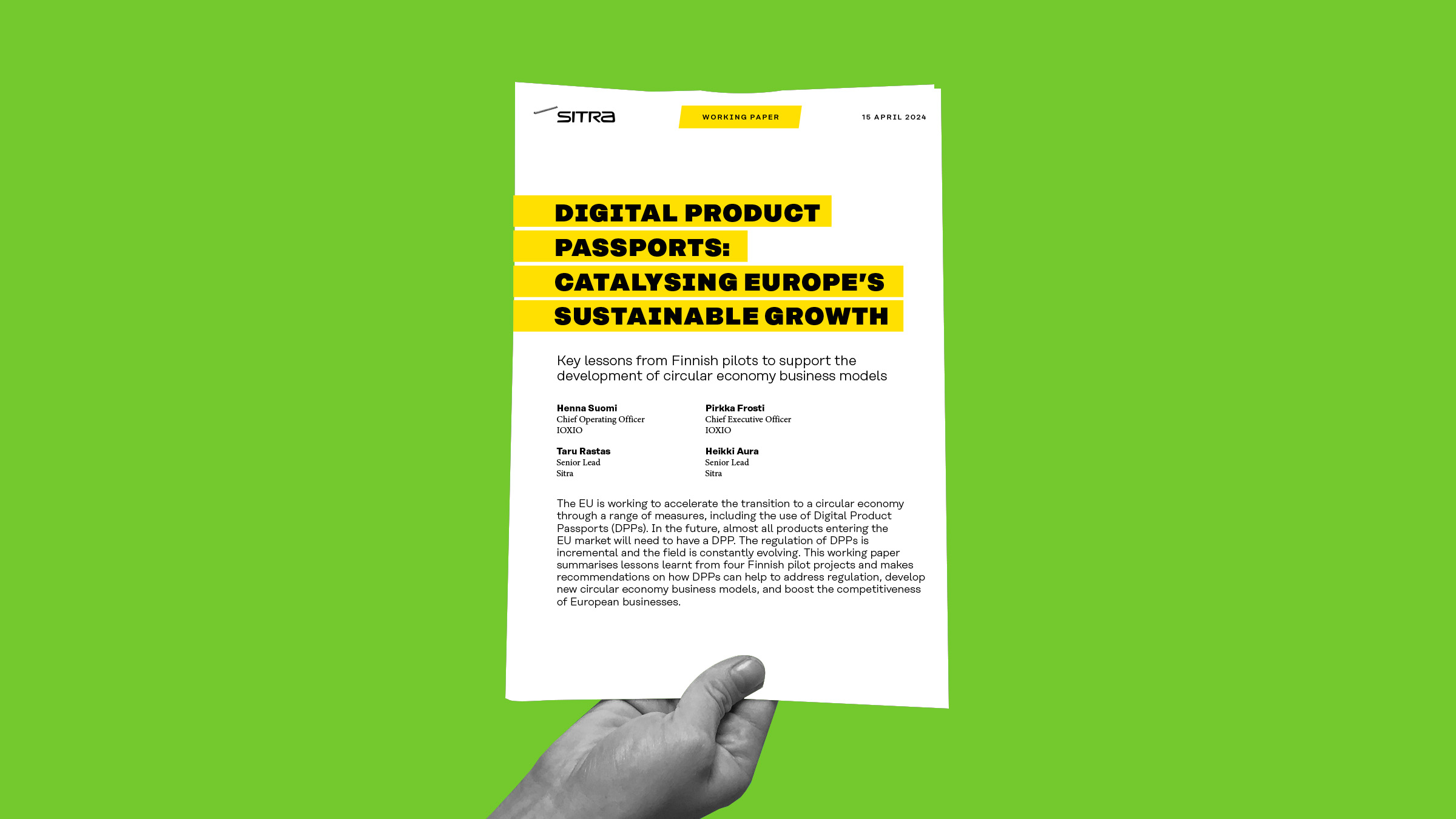













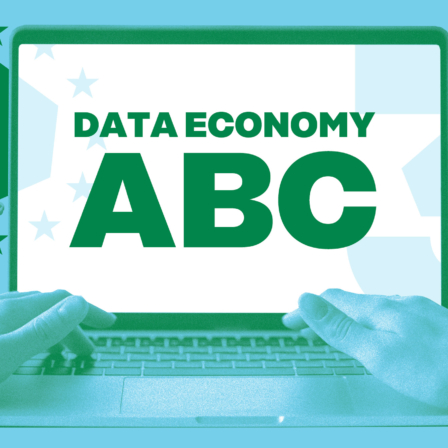

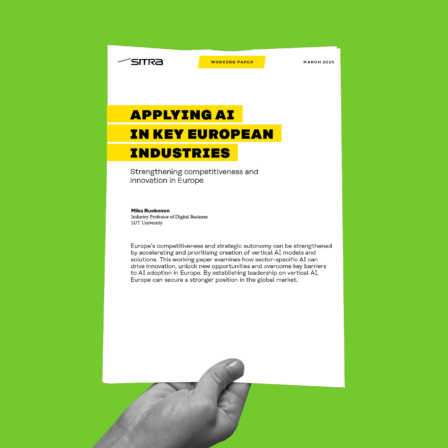
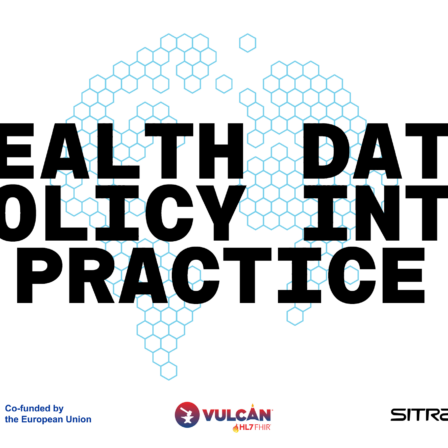

Recommended
Have some more.